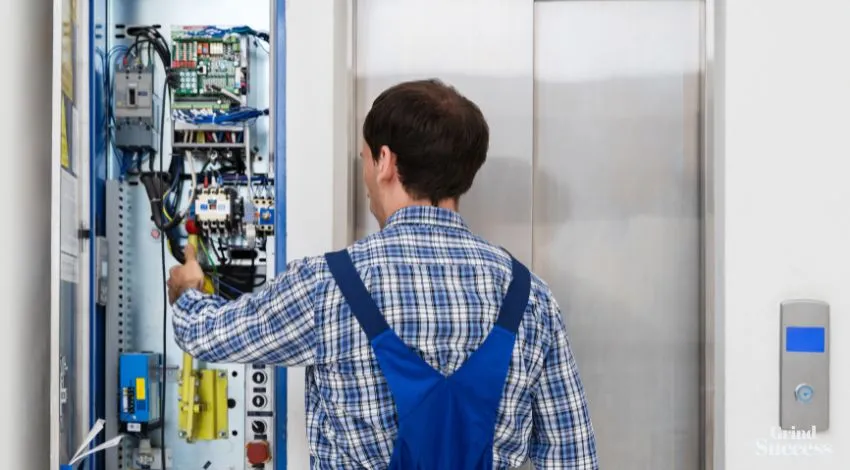Elevator Maintenance in the Digital Age: Predictive Analytics and Proactive Solutions

The revolution has shifted the focus from traditional, reactive maintenance methods to predictive analytics and proactive solutions.
In the contemporary world of building management, digital technology has revolutionized various aspects of maintenance, especially regarding elevator maintenance solutions.
Through the adoption of digital technologies, maintaining elevators has become more efficient, safe, and cost-effective.
This transition to digital maintenance strategies ensures that elevator systems operate with greater reliability and minimal downtime, significantly enhancing the user experience and the overall functionality of buildings.
This article explores the digital technologies and practices that have become integral to modern elevator maintenance, highlighting their impact on building operations and user experience.
The Rise of Predictive Maintenance
Predictive maintenance stands at the forefront of this technological revolution in elevator upkeep.
Utilizing advanced data analytics and machine learning algorithms, this approach forecasts potential malfunctions and wear-and-tear issues before they lead to breakdowns.
This method relies on the continuous monitoring and analysis of data derived from elevator operations, such as the number of trips, door cycles, and other key performance indicators.
By identifying trends and patterns within this data, maintenance teams can predict and preemptively address issues, thereby reducing the frequency of unexpected repairs and extending the service life of the elevators.
IoT and Real-Time Monitoring
Implementing Internet of Things (IoT) technology in elevator systems has significantly enhanced the scope of maintenance strategies. Elevators equipped with IoT sensors provide constant data regarding their status and performance.
This real-time monitoring is pivotal in identifying and diagnosing issues promptly, often before they become noticeable to users.
With IoT, maintenance technicians can access detailed information about elevator operations remotely, ensuring they are well-prepared to address any issues efficiently and effectively.
Data Analytics in Elevator Maintenance
Data analytics is a critical component of modern elevator maintenance. By analyzing the extensive data collected from elevator systems, maintenance teams can gain deep insights into the elevators’ operational health and maintenance needs.
This approach enables a more nuanced understanding of component wear, usage patterns, and overall system performance.
Consequently, maintenance activities can be strategically planned and executed based on actual needs rather than fixed schedules, optimizing resource utilization and minimizing downtime.
Mobile Technology for Efficient Service
The integration of mobile technology has transformed the elevator maintenance landscape.
Maintenance technicians with mobile devices can receive instant notifications about system issues, access detailed maintenance records, and even remotely diagnose problems.
This capability ensures quick and efficient responses to maintenance needs, significantly reducing the time elevators are out of service and enhancing overall operational efficiency.
User-Centric Maintenance Approach
The digital age has ushered in a user-centric approach to elevator maintenance. This strategy emphasizes minimizing disruptions and enhancing the experience for building occupants.
Through digital communication, maintenance teams can provide timely updates about scheduled maintenance activities and respond swiftly to service interruptions.
This approach prioritizes the convenience and satisfaction of the users, ensuring that elevator services are reliable and that any necessary maintenance work causes minimal disruption.
Energy Efficiency and Sustainability
Digital technologies in elevator maintenance also play a crucial role in promoting energy efficiency and sustainability.
Predictive maintenance ensures that elevators operate at optimal efficiency, thereby reducing energy consumption and associated costs.
Furthermore, through the analysis of operational data, adjustments can be made to elevator usage patterns and settings, contributing to energy conservation and aligning with broader environmental sustainability initiatives.
Safety Enhancements Through Technology
Safety is a paramount concern in elevator maintenance, and digital technologies have significantly improved this aspect.
Continuous monitoring and predictive maintenance enable the early detection of potential safety hazards, facilitating proactive measures to ensure the safety of elevator users.
Regular, data-driven maintenance ensures that all safety-critical components of the elevator system are in optimal condition, providing users a secure and reliable mode of transportation.
Advanced Diagnostics and Remote Troubleshooting
A pivotal advancement in elevator maintenance in the digital age is the development of advanced diagnostic tools and remote troubleshooting capabilities.
This technology represents a significant leap forward in maintenance methodologies, allowing for a more sophisticated, efficient, and timely response to elevator issues.
Modern elevator systems are equipped with advanced diagnostic software that continuously analyzes the performance and health of various components.
These systems can detect anomalies and potential issues in real time, often before they escalate into noticeable problems.
For instance, if an elevator’s door mechanism shows signs of wear or irregular performance, the diagnostic system can flag this issue immediately.
Remote troubleshooting takes this a step further by allowing maintenance technicians to diagnose and, in some cases, resolve issues without needing to be physically present at the site.
Through remote access to the elevator’s control system, technicians can run diagnostic tests, reset systems, or make minor adjustments.
This capability is particularly beneficial in reducing downtime and minimizing disruption, as many issues can be resolved quickly and efficiently without waiting for a technician to arrive on-site.
Furthermore, these advanced diagnostic and remote troubleshooting systems can gather and analyze historical data over time, providing valuable insights into the elevator’s long-term performance and maintenance needs.
This data can help predict future issues and guide decisions regarding upgrades or replacements, ensuring the elevator’s longevity and optimal performance.
Incorporating these advanced diagnostic and remote troubleshooting technologies into elevator maintenance represents a significant step towards more proactive, efficient, and user-friendly maintenance practices.
As these technologies evolve, they will undoubtedly play an increasingly important role in maintaining elevator systems’ safety, efficiency, and reliability in the digital age.
Conclusion
In conclusion, the shift to digital elevator maintenance solutions marks a significant advancement in building maintenance.
Integrating IoT, data analytics, and mobile technology has streamlined the maintenance process, ensuring elevators are safer, more efficient, and more reliable.
As these technologies continue to evolve, they will further enhance the capabilities of elevator maintenance, ensuring that these critical systems remain an integral and dependable part of modern buildings.






